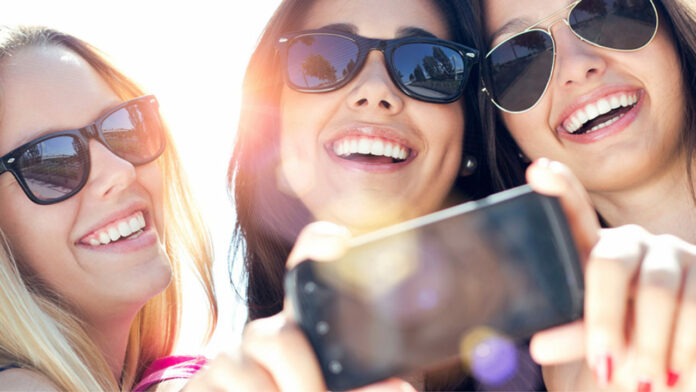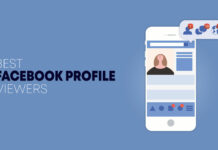
There are years or seasons where we may feel more invested in health or beauty trends and others when we feel ourselves putting those efforts on the sidelines. A global pandemic, such as the one the world is still working through, is an example of a time when priorities may shift off the health and beauty industries and onto other areas, an entirely understandable redirection. However, as we have seen life return more to usual in 2021 than it was in 2020, many people have felt a renewed excitement over incorporating health and beauty trends back into their lives. Just as 2020 could be considered a time to focus on other priorities, some found that the chapter was the perfect time to focus on their health and wellness, or experiment with some fun beauty trends. And of course, since we are in the midst of a pandemic, the place to turn to is social media for inspiration and communication.
We have seen that social media has not just been a place for people to collaborate and express themselves–it has also become a platform inciting change, such as the way that trends are picked up and spread at a rapid pace by users. Health and beauty industry experts have weighed in on the ways that social media makes an impact in their fields. We spoke with them to find out how they think trends will continue to be shaped by the online world in 2022. Keep reading to learn about which effects they believe will continue to be prevalent.
Beauty Looks Spread Quickly Online and Become Trends
“Social media shapes beauty trends because looks spread rapidly online. If some celebrity or ‘it girl’ persona styles her hair in a new way or tries a bold eyeliner look, the number of people who view and share the look is massive, and that is how a new look quickly becomes a trend once other people adopt it. While designers and their displays at the Fashion Weeks still largely set the tone for the next year’s upcoming beauty and style trends, now they are not the only ones with power. Anyone on social media can ‘go viral’ and receive major popularity, or secretly influence a new beauty trend from one picture without knowing they were the source of inspiration. Now the power belongs to all the people sharing their lives on social media. Without even realizing, we are all shaping pop culture in bite-sized doses,” says Maegan Griffin, Founder, CEO, and Nurse Practitioner of Skin Pharm.
Influencers Largely Shape Health and Beauty Trends
“Being an influencer is a highly sought-after job today, and the main requirement is having a lot of followers. Rather than apply for a job and hope you get accepted, people are building their own positions by gathering followers until they’re at a point of popularity where businesses and brands are reaching out to them with business opportunities. Social media users are therefore being constantly influenced by the people they follow, and are unconsciously led to think about what the put-together people they look up to are wearing, how they are styling their hair, and what kind of lifestyle they follow. Health and fitness influencers are especially prevalent these days, and their promotion of a healthy and active lifestyle has garnered traction. They promote everything from supplements to workout clothing to health food products to workout programs,” says Lindsay McCormick, Founder and CEO of Bite.
Social Media Users Feel Connected to the Influencers They Follow
“People used to watch celebrities on the red carpet talking about what they were wearing, or they would flip through magazines and look at celebrities in makeup ads, but that has lost its traction, especially among younger consumers. Now, people want to go online and get an at-your-fingertips experience. They want to ask an influencer questions and get personal responses. These established brands are facing a loss of credibility as they are being disrupted by direct-to-consumer brands.
“Instagram is by far the best volume play. It’s very visual, and it’s simple to put a lot of photos and short videos out there to immediately reach your followers. Plus, you can directly respond to people’s comments, so there’s this easy communication back and forth. These consumers are building relationships, and they are bonding with these influencers. They have regular conversations back and forth, and they think of the influencers as being directly ingrained in their day-to-day lives.
“Figure out which social media channels will attract your audience, be deliberate about how you showcase your products on different channels, and make sure the people who represent your company will be seen as authentic, trusted voices of the image you want to present,” says Alessia Vettesem, Senior Manager of Rent the Runway.
There Is a Rise In Video Sharing of Products and Routines
“With the rise of social media has come the rise of video advertising, to the point where 81% of internet traffic is video. Videos are proven to be far more effective than text since we now know users process and retain 85% more of a video message versus one in text. People share their everyday lives on social media through pictures, videos, and livestreams, so we know a lot more about others than we used to; even though they are still relative strangers to us, we often feel differently. This leads to questions about what beauty products the people we see on our feeds use. Product reviews and advertising is being shared far more than in the past, and yet oftentimes the reviews don’t make it back to the product creator’s website since it is just normal people sharing their beauty routines and favorites to their followers. So I would say the sharing of mundane information is more prevalent today, but credit is often not given back to the source since it is done so informally,” says Shaun Price, Head of Customer Acquisition of MitoQ.
Consumer Connections and Brand Loyalty Have Made a Difference
“Social media has completely redefined health and beauty trends over the recent decades, because the vast world of beauty and health products fulfills a primal consumer need for individuality, social connection, and acceptance. Instead of flipping through magazines and tagging favorite seasonal products, social media expands the customer experience to connect them with AI-enabled skincare (virtual try-on), back eco-conscious brands, learn from an inspiring influencer, or become a health/beauty influencer themselves.
“Evolving changes in the health and beauty industry are influenced by the strong consumer connection and sense of brand loyalty that social media provides,” says Rachel Roff, Founder and CEO of Urban Skin Rx.
Social Media Users Incite Change Because Brands Are Listening
“Since so many areas of life have moved into the online world (especially considering that during a pandemic there is no other place to interact and make change), social media users have become the ones influencing culture and trends. They have shaped the health and beauty industry with their voices. Since every successful business is engaging in social listening–the act of paying attention to what users and followers are saying about and sharing in regards to their brand–the people are being heard and influencing change at the same time. Consider it: your favorite brands are right there online with you, so they are easier to reach than ever. You can message them directly or comment on one of their posts and expect a quick response. Oftentimes their responses to you are public, such as on Twitter, so they are going to do their best to satisfy your frustration.
So when the online community, which is made up of mostly everyone in this day and age, says they want a business to start doing things differently, they are mostly heard and accommodated. It’s a really interesting study at how people can incite change in the digital world,” says Ubaldo Perez, CEO of Hush.
Product and Packaging Appearance Matters
“With social media, businesses get influencers and celebrity endorsers to review and recommend their products because their mass numbers of followers guarantee that the advertising will reach many. As a result, there has become a shift in importance towards product and packaging aesthetics. Products with strong design qualities, pops of color, and eye-catching packaging can easily be photographed and promoted in a way that encourages others to pay attention. In 2022 this trend will continue and you’ll be hard pressed to find brands who don’t prioritize their product’s design,” says Ari Sherman, Co-Founder of evo hemp.
Small Businesses Have an Equal Opportunity to Be Found
“Due to the ease of social media advertising–and it’s easy firstly because you know everyone is active on social platforms and seeing your ads–users are aware of so many more brands and businesses than in the past. This includes small businesses as well who may only have an e-commerce store or a small marketing budget, and yet they are in the running the same as their larger competitors. Users can find new brands through their advertising, but also through sponsorships, endorsement, shared posts or stories, and even through the shopping tab or individualized search tab,” says Cindy Le, Co-Founder and COO of Revela.
Branding Needs to Express Who The Business Is
“Gen Z is viewing brands as complementary to who they are. Core to their identity are issues around diversity, inclusivity, sustainability, transparency and trustworthiness. This is why the idea of brands as people has gained so much momentum in recent years. Gen Zs are not going to buy products from a brand they wouldn’t be friends with,” says Michael Engert, Co-Founder and President of Good Light.
Former Beauty Ideals Are Being Broken Down and Discussions Opened
“Social media has opened up deeper conversations about appearance, mental health, and the breakdown of the still perpetuated but damaging ideas surrounding beauty. For example, users are challenging the concept that photos must be photoshopped and perfected and instead are opting to post their unfiltered selves. It is now commonplace to see pimples, wrinkles, cellulite, or body hair on Instagram, whereas these things used to incite shame. This is shaping the health and beauty industries by demanding the marketing of real people, real skin, and real bodies.
“Businesses are encouraged to listen to the various discussions, participate, and make changes to their business model based on their understanding of what their customers desire. For instance, sustainability is a major concern that people have brought increased attention towards, and businesses who are making moves to create a better ecological footprint have received respect and added brand loyalty from their followers,” says Roman Taranov, CEO of Able.
Social Media Has Changed How Goods Are Purchased
“Social Media is like the new version of e-commerce stores. Businesses selling products or services should still set up an e-commerce store, but social media also acts as a location where users can make purchases. Instagram, Pinterest, and Facebook are all platforms where businesses can experience an increase in sales through advertising their products or services to their target demographics,” says Miles Beckett, CEO and Co-Founder of Flossy.
Businesses Can Reach Customers Around the World
“With social media platforms and online selling, businesses can have a global reach. Even small businesses can reach customers anywhere in the world, communicating and interacting with followers around the world, possibly even before they have the ability to ship worldwide. Social media provides an excellent opportunity for businesses to have a wider reach than they previously could have arranged,” says Ryan Rockefeller, Co-Founder and CEO of Cleared.
Surely if you view your own social media feeds, you can recognize the changes to the health and beauty industries mentioned by industry experts. We can all see how the business world has changed in even the last couple years. It will be exciting to keep an eye out for which of these trends continue in 2022, and which are replaced with even more prevalent adaptations.











